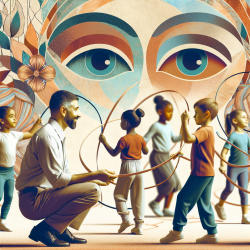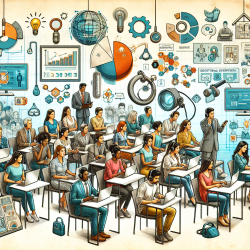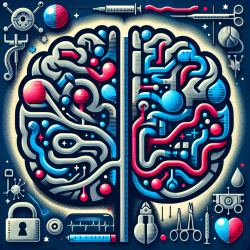As professionals dedicated to improving the lives of children with Autism Spectrum Disorder (ASD), it's crucial to stay informed about the latest research and intervention strategies. A recent study titled Effects of Rhythmic Gymnastics on Joint Attention and Emotional Problems of Autistic Children: A Preliminary Investigation provides compelling evidence on the benefits of Adaptive Rhythmic Gymnastics (ARG) for enhancing joint attention and emotional well-being in children with ASD.
Understanding the Study
The study employed an A-B-A cross-subject multibaseline design to evaluate the impact of ARG on two 6-year-old children with ASD. Joint attention and emotional behaviors were meticulously recorded and analyzed. The findings revealed significant improvements in joint attention and a reduction in negative emotional behaviors, underscoring the potential of ARG as an effective intervention.
Key Findings and Practical Applications
The study highlighted several critical outcomes that can inform your practice:
- Enhanced Joint Attention: The children demonstrated a marked increase in joint attention behaviors during the ARG intervention phase. This improvement was particularly notable in responding joint attention (RJA), which is foundational for initiating joint attention (IJA).
- Reduced Negative Emotions: The frequency of negative emotional behaviors, such as crying and screaming, decreased significantly during the intervention. This suggests that ARG can help stabilize emotional states in children with ASD.
- Social Validity: The intervention was well-received by both teachers and parents, indicating its feasibility and acceptability in real-world settings.
Implementing ARG in Your Practice
To integrate the findings from this study into your practice, consider the following steps:
- Structured Sessions: Design ARG sessions that gradually increase in complexity, ensuring that children can master each stage before moving on to more challenging tasks.
- Incorporate Music and Games: Use music and game-based activities to make the sessions engaging and enjoyable. These elements can capture the children’s attention and encourage participation.
- Monitor Progress: Keep detailed records of joint attention and emotional behaviors to track progress and make data-driven adjustments to the intervention.
- Parent and Teacher Involvement: Collaborate with parents and teachers to ensure consistency and reinforcement of the skills learned during ARG sessions.
Encouraging Further Research
While this study provides valuable insights, it also opens the door for further research. Future studies could explore the long-term effects of ARG, its impact on a larger sample size, and its efficacy in different settings. Practitioners are encouraged to contribute to this growing body of knowledge by conducting their own research and sharing their findings.
To read the original research paper, please follow this link: Effects of Rhythmic Gymnastics on Joint Attention and Emotional Problems of Autistic Children: A Preliminary Investigation.










